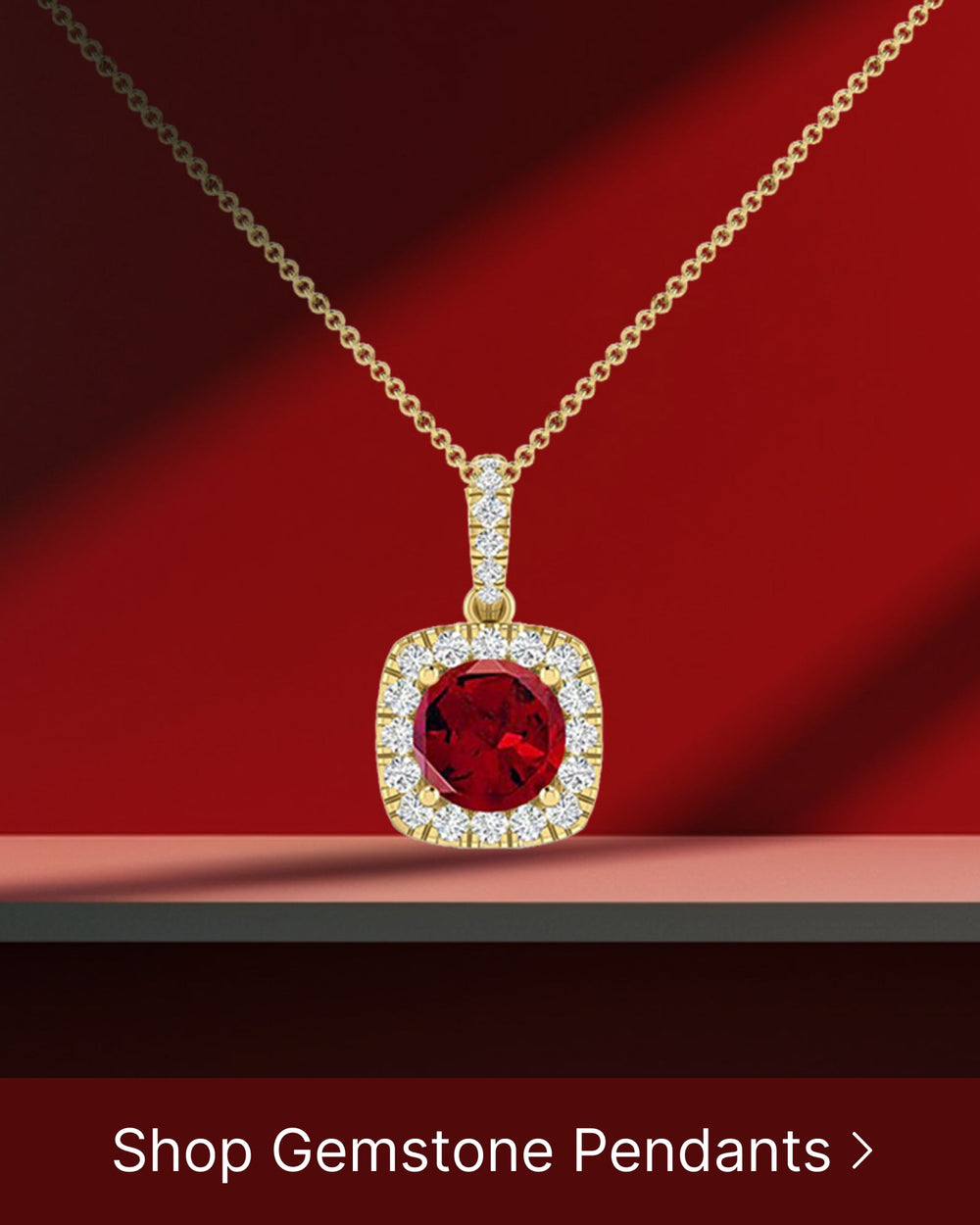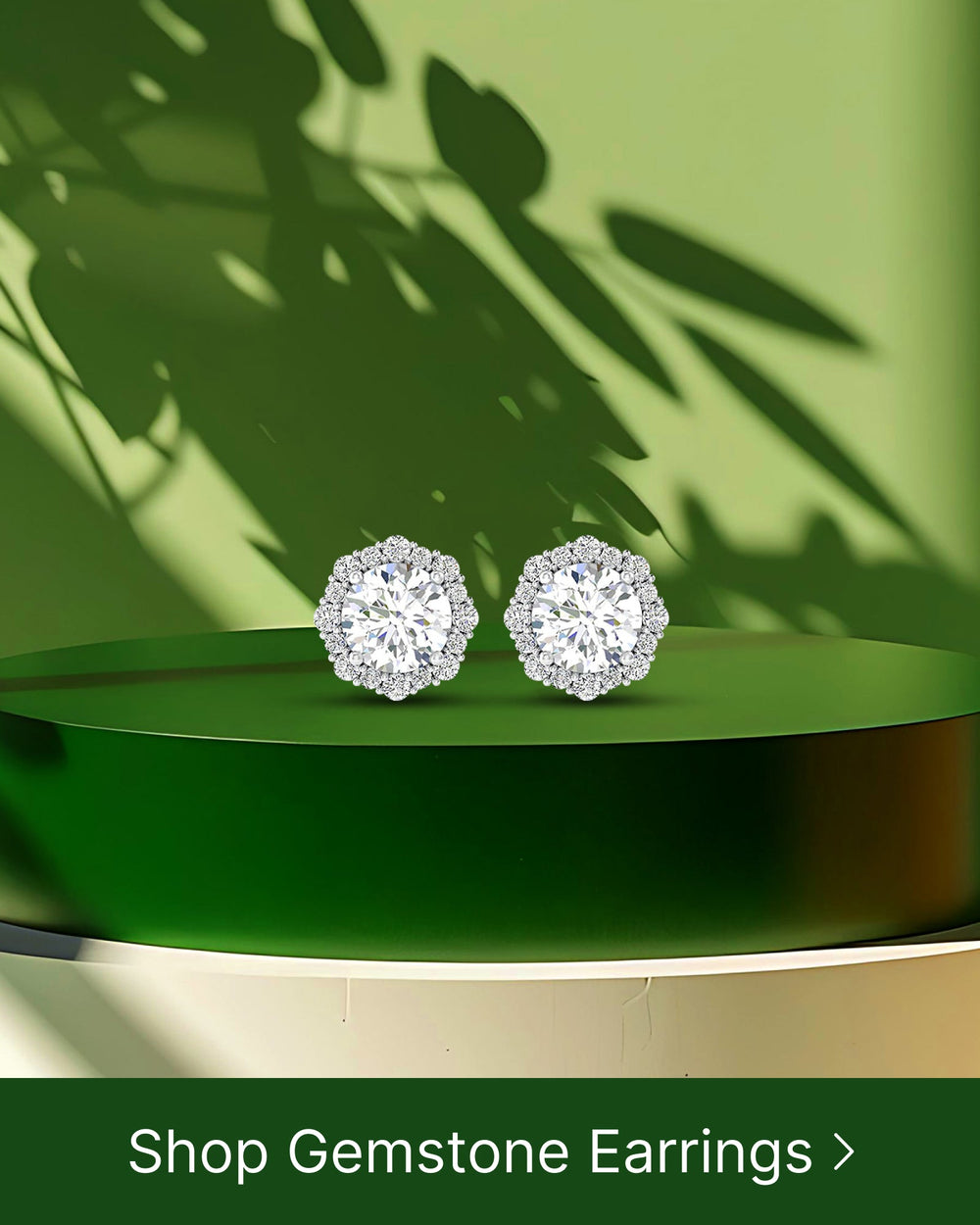Garnet, the birthstone of January, holds a special place in the world of gemstones. Its deep red color and rich history have made it a beloved choice for jewelry and a symbol of strength and passion for centuries.
Understanding the Significance of Birthstones
Before we delve into the unique characteristics of garnet, let's take a moment to understand the significance of birthstones. Birthstones are gemstones that are associated with specific months of the year. They hold mystical and symbolic meanings, making them popular choices for personal adornment and gifts.
Birthstones have a rich history that dates back thousands of years. Scholars believe that the idea of wearing a gemstone corresponding to one's birth month can be traced back to ancient civilizations, including the ancient Hebrews and Greeks. These ancient cultures believed that wearing a birthstone would bring them good fortune and protection.
In the 18th century, jewelers in Poland began promoting the practice of wearing birthstones as a way to bring good luck and ward off evil. This practice gained popularity and spread across Europe and eventually the world. Today, birthstones are not only cherished for their beauty but also for the personal connection they hold.
The Cultural Importance of Birthstones
Birthstones often hold cultural importance in various societies. In addition to their astrological and symbolic significance, they are woven into folklore, legends, and religious practices. These gemstones not only represent an individual's birth month but also carry a heritage and connection to their cultural roots.
For centuries, birthstones have been associated with various beliefs and customs. In some cultures, birthstones are believed to possess healing properties and are used in traditional medicine. In others, they are seen as talismans, protecting the wearer from harm and bringing them good fortune.
Birthstones also play a significant role in religious ceremonies and rituals. In many traditions, specific gemstones are associated with certain religious figures or events. For example, in Christianity, the twelve gemstones mentioned in the Bible are often associated with the twelve apostles.
The Mesmerizing Garnet
Garnet, as the birthstone of January, has a long-standing cultural significance. This stunning gemstone is known for its deep red color, symbolizing passion, love, and strength. It has been treasured for centuries for its beauty and believed metaphysical properties.
One of the unique characteristics of garnet is its wide range of colors. While red is the most common color, garnet can also be found in shades of orange, yellow, green, and even rare blue. This variety allows individuals born in January to choose a garnet that resonates with their personal style and preferences.
Throughout history, garnet has been associated with various qualities and virtues. It is believed to bring protection, balance, and positive energy to the wearer. In ancient times, warriors would wear garnet as a talisman for strength and courage in battle.
Not only is garnet a beautiful gemstone, but it also holds historical and cultural significance. It has been used in jewelry and decorative objects for centuries, adorning crowns, amulets, and even religious artifacts. Its timeless beauty and symbolism continue to captivate people around the world.
The Unique Characteristics of Garnet
Garnet is a gemstone known for its fiery and intense red color. However, it's important to note that garnet actually comes in a range of colors, from vibrant reds to deep oranges, greens, and even blues. This makes garnet a versatile gemstone, appealing to a variety of tastes.
But what makes garnet truly fascinating is not just its color range, but also its rich history and unique physical properties. Let's dive deeper into the world of garnet and explore its captivating characteristics.
Physical Properties of Garnet
Garnet belongs to a group of minerals that share similar crystal structures. Chemically, garnet is composed of a combination of elements such as aluminum, silica, and various metallic ions. These elements give garnet its unique physical properties.
One of the striking features of garnet is its high refractive index, which means it has exceptional brilliance and sparkle when cut and polished. Imagine holding a garnet gemstone up to the light and being mesmerized by its dazzling display of colors. Its hardness, ranging from 6.5 to 7.5 on the Mohs scale, makes it durable and ideal for use in jewelry.
But garnet's allure doesn't stop there. Its crystal structure also allows it to exhibit a phenomenon called pleochroism. Pleochroism refers to the ability of a gemstone to display different colors when viewed from different angles. This means that depending on how you look at a garnet, it can appear to be a different color, adding an element of intrigue and mystique to this already captivating gemstone.
Varieties of Garnet
Garnet comes in several different varieties, each with its own charm and allure. Some of the most popular garnet varieties include:
- Almandine Garnet: The most common variety, known for its deep red hue. Almandine garnet has been used in jewelry for centuries and continues to be a popular choice for its timeless beauty.
- Pyrope Garnet: Characterized by its vibrant red color, pyrope garnet is highly prized by gemstone enthusiasts. Its name, derived from the Greek words for "fire" and "eye," perfectly captures the fiery brilliance of this gemstone.
- Spessartite Garnet: This variety often exhibits warm orange tones and is cherished for its fiery appearance. Its name is derived from the Spessart region in Germany, where it was first discovered.
- Grossular Garnet: With colors ranging from green to yellow to orange, grossular garnet offers a versatile range of shades. This variety is also known for its exceptional clarity, making it a popular choice for gemstone collectors.
- Demantoid Garnet: Considered one of the rarest and most valuable garnets, demantoid garnet is known for its brilliant green color and exceptional brilliance. Its name, derived from the Dutch word for "diamond-like," perfectly describes its captivating beauty.
As you can see, garnet is not just a gemstone with a single shade of red. It is a gemstone with a rich spectrum of colors, a testament to its versatility and beauty. Whether you prefer the deep reds of almandine garnet or the vibrant greens of demantoid garnet, there is a garnet variety that will capture your heart and ignite your passion for gemstones.
Garnet in Folklore and Mythology
Garnet, a mesmerizing gemstone, has a rich history intertwined with various cultures around the world. Its allure and significance have led to its inclusion in numerous folklore and mythological narratives.
Let us delve deeper into the captivating tales and beliefs surrounding garnet.
Garnet in Ancient Civilizations
In ancient Rome, garnet held a special place and was associated with the god Mars, the embodiment of passion, energy, and protection. Warriors adorned themselves with garnet, believing that it would bring them victory in battle and shield them from harm.
The ancient Egyptians also revered garnet, considering it a powerful talisman symbolizing life and regeneration. The pharaohs believed that garnet possessed protective powers and would guide them in the afterlife, ensuring a smooth transition into eternity.
Such beliefs and associations with garnet highlight its significance and the reverence it commanded in ancient civilizations.
Symbolism and Healing Powers of Garnet
Beyond its historical significance, garnet carries profound symbolism and is believed to possess healing properties that captivate both gemstone enthusiasts and individuals seeking emotional and spiritual balance.
Garnet is often associated with passion, creativity, and vitality. It is said to ignite the flames of love and devotion, enhancing one's sensuality and self-confidence. The deep red hues of garnet are believed to symbolize the intensity of emotions and the fervor of life itself.
In the realm of crystal healing, garnet is thought to have a grounding effect, balancing emotions, and promoting inner strength. It is believed to cleanse and energize the chakras, the energy centers within the body, facilitating the harmonious flow of energy throughout the physical and spiritual realms.
Whether worn as a stunning piece of jewelry or utilized for its healing properties, garnet continues to captivate and inspire individuals across the globe.
As we explore the folklore and mythology surrounding garnet, we gain a deeper appreciation for this enchanting gemstone and the profound impact it has had on cultures throughout history.
The Geographical Distribution of Garnet
Garnets can be found in various parts of the world, with different countries contributing to the global production of this captivating gemstone.
Major Garnet Producing Countries
The largest producers of garnet include India, China, Australia, and the United States. These countries possess significant mineral deposits and have a long history of mining and processing garnet.
The Process of Garnet Mining
Garnet is primarily mined from deposits in sedimentary rocks or alluvial deposits. The mining process involves extracting garnet-rich ore from the earth and then separating the gemstones through various methods, including crushing, screening, and gravity separation.
The Role of Garnet in Jewelry
Due to its captivating color, exceptional brilliance, and availability in a range of varieties, garnet has become a popular gemstone choice for jewelry.
Garnet in Traditional Jewelry
The rich red color of garnet has a timeless appeal that adds elegance and sophistication to traditional jewelry designs. Garnet is often featured in rings, earrings, necklaces, and bracelets, complementing both formal and casual attires.
Modern Uses of Garnet in Jewelry
Beyond traditional styles, garnet has also found its place in modern and contemporary jewelry designs. Its versatility in color and exceptional brilliance make it a favorite among jewelry designers seeking to create unique and bold pieces.
In conclusion, garnet, as the birthstone of January, holds a significant place in the world of gemstones. Its rich history, versatile characteristics, and cultural importance make it a treasured gemstone that continues to capture the hearts of individuals worldwide.






